
 |
Eager Space | Videos by Alpha | Videos by Date | All Video Text | Support | Community | About |
|---|

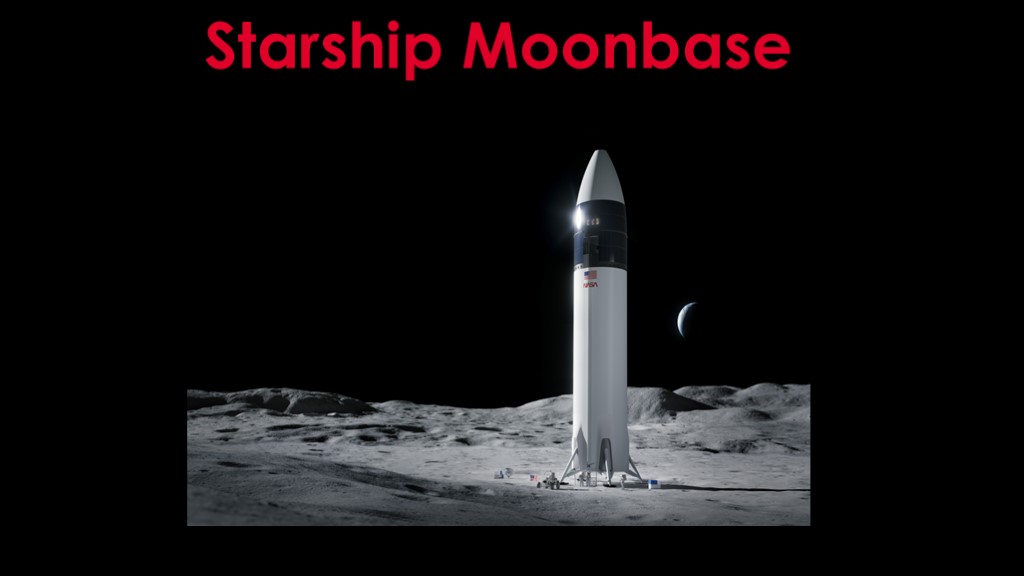
Welcome to starship moonbase...

NASA's moonbase plans start with what is known as the "foundation surface habitat". Most of the designs look like this, with a habitat on top of a lander.
But we already have a design with a habitat on top of a lander. What could we do with a habitat based on starship.
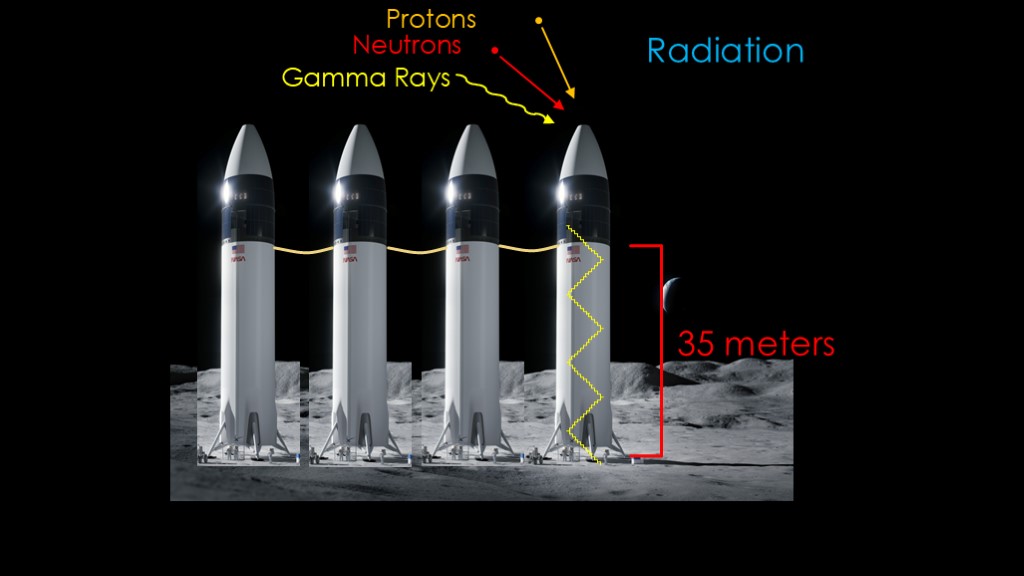
There are a few issues with this approach...
First, it's a *long* way up to the payload section - 35 meters, or about 7 flights of standard stairs. The plan is to have platforms you can ride up and down, but that's not a great solution in the long term if you want to expand your habitat.
Perhaps they could attach rope ladders between the various starships to provide easy access...
There's one additional problem with the vertical approach - Radiation in the form of protons, neutrons, and gamma rays will be continuously hitting the habitat.
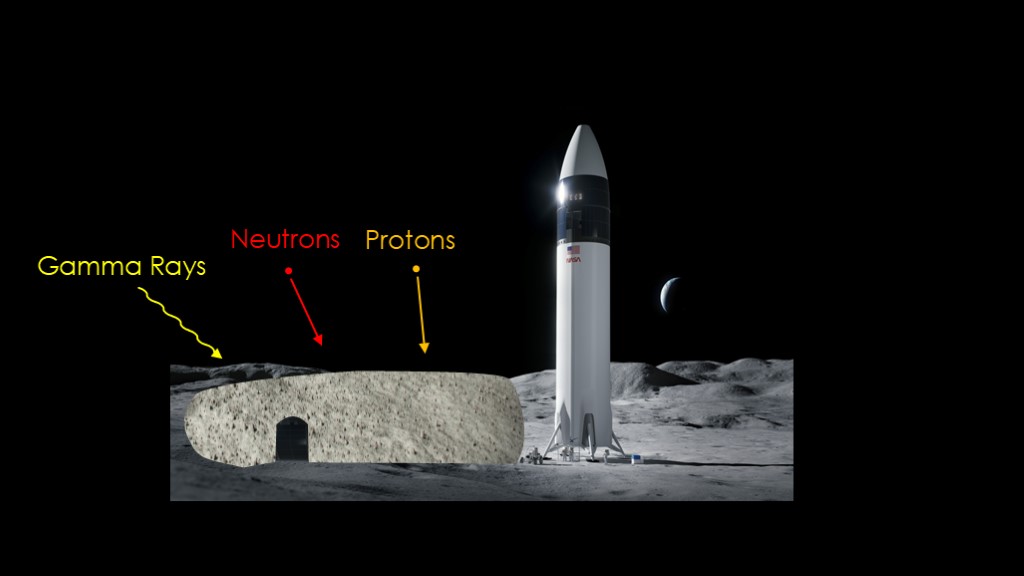
If the starship is horizontal, it can be covered with lunar soil - or regolith - for protection against radiation.
It's also obviously much easier to get into and out of the habitat.
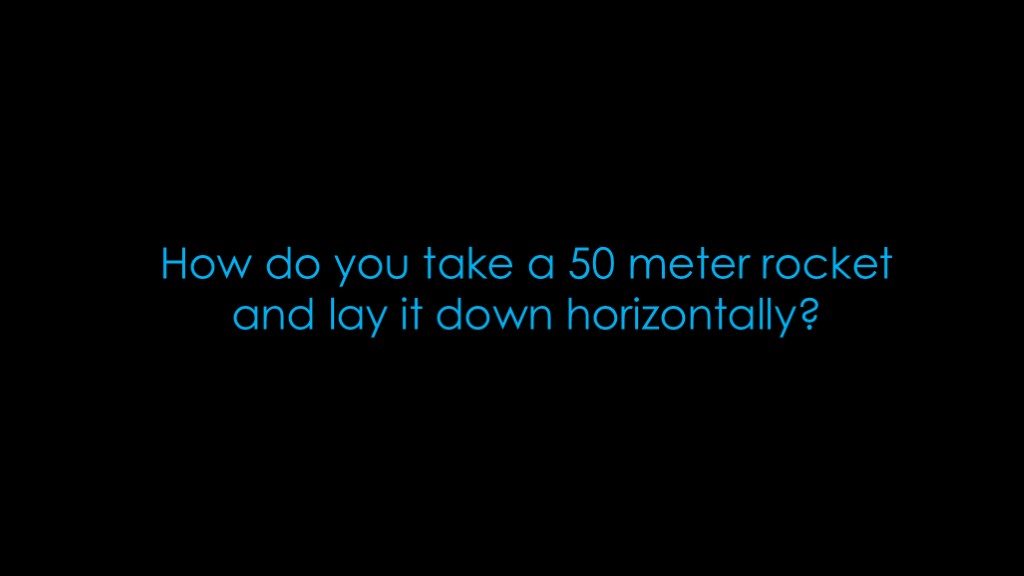
If horizontal is better, now do you take a 50 meter rocket and lay it down horizontally?
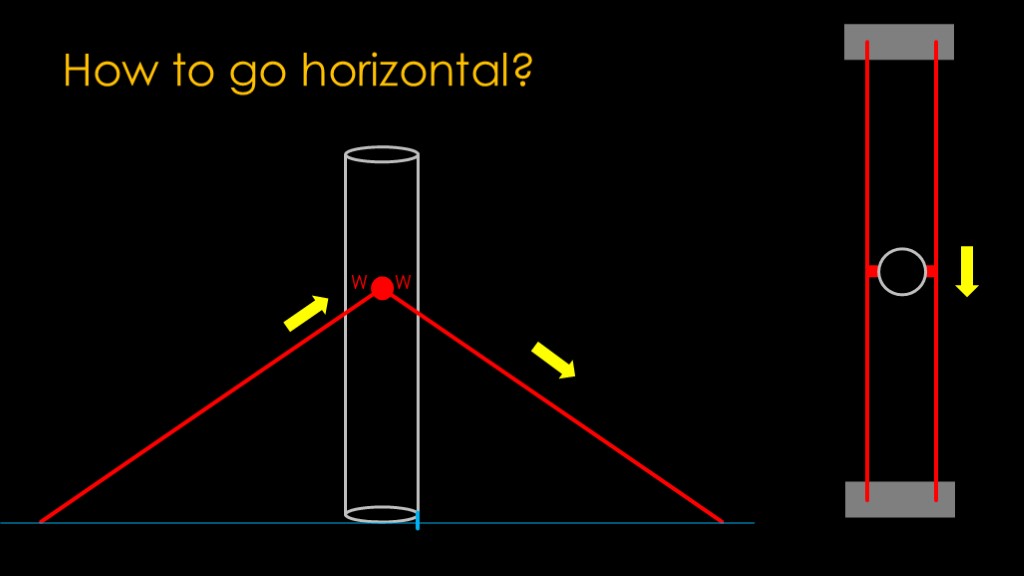
My first thought is to use cables to lower the starship.
We start with a reinforced mounting point on both sides of starship.
We unroll the cable from a winch near the payload section, take it out to the side, and anchor it into the surface. This cable will be used to pull starship to the side until it starts to fall over on its own. Here's a top view.
Then we need a second set of winches to slowly lower starship down to the ground.
And finally, we need a way to anchor the bottom right point so it doesn't slide away.
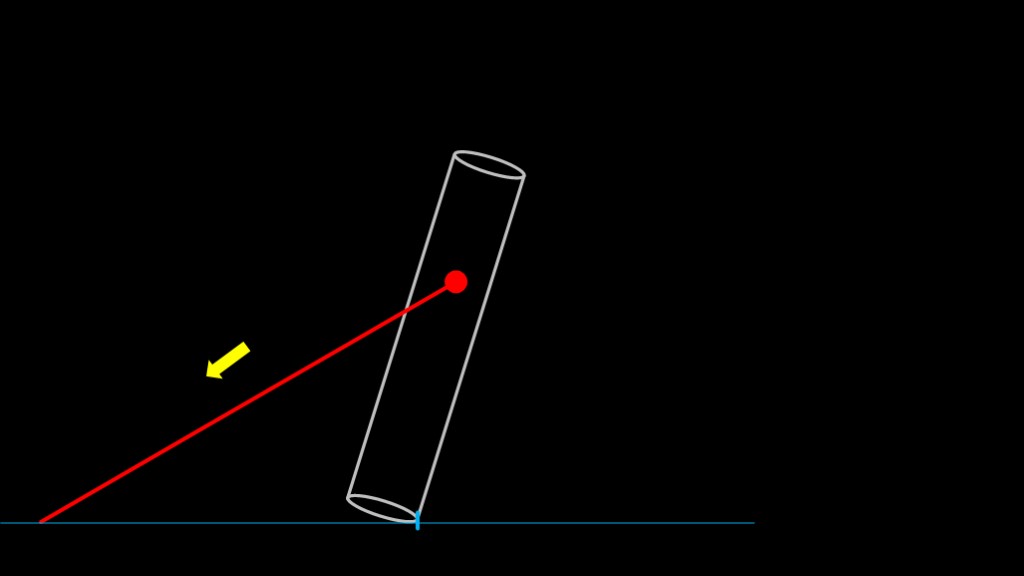
Once we've gotten it tilted over, we can ignore the cable that pulls it over and concentrate on the lowering cable.
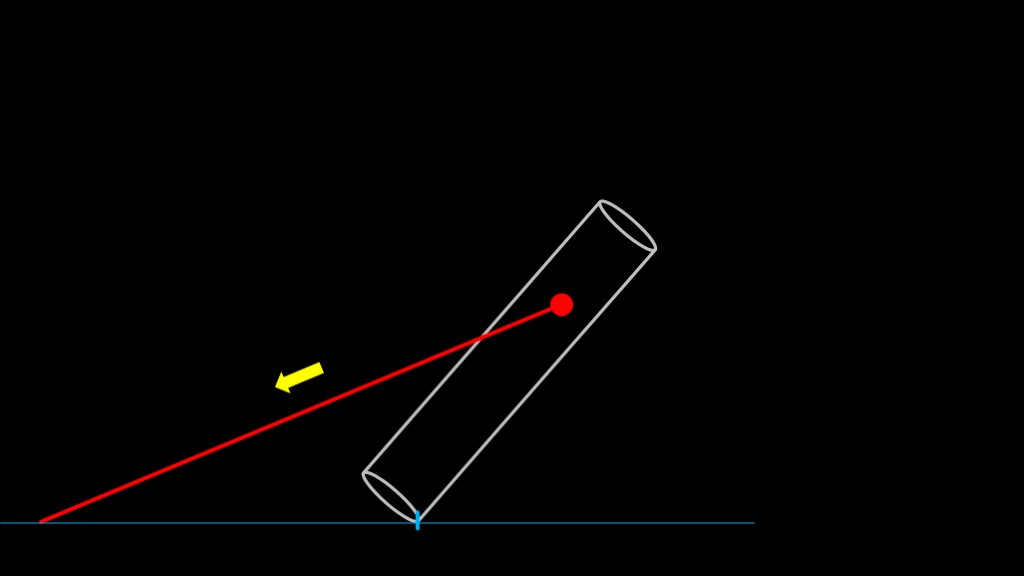
A bit lower
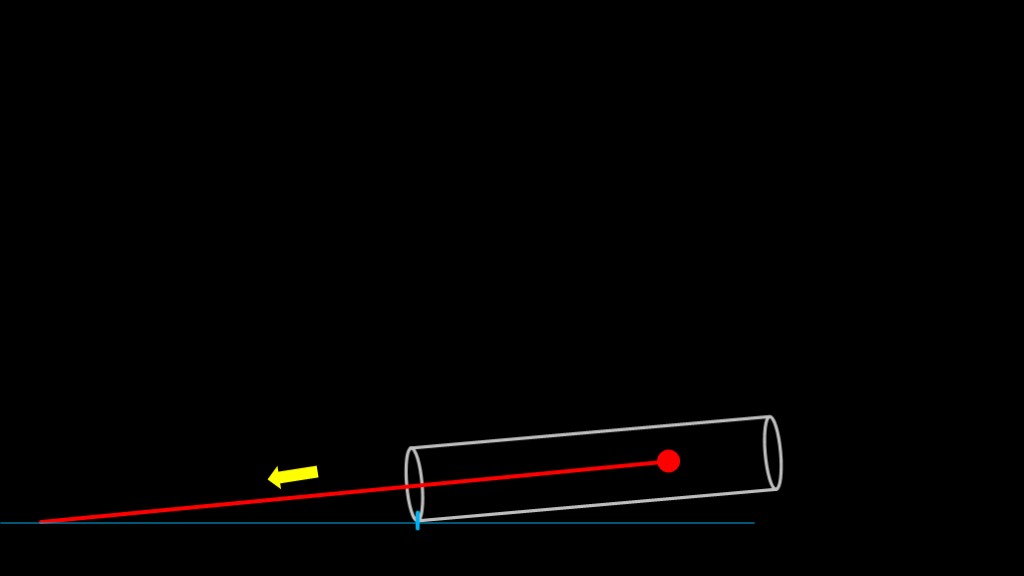
And we're almost down. But we have a big problem - at this point the cable stops helping keep starship up and starts pulling it down to the ground faster.
That's not going to work...
We need a way to keep the angle from getting too low.
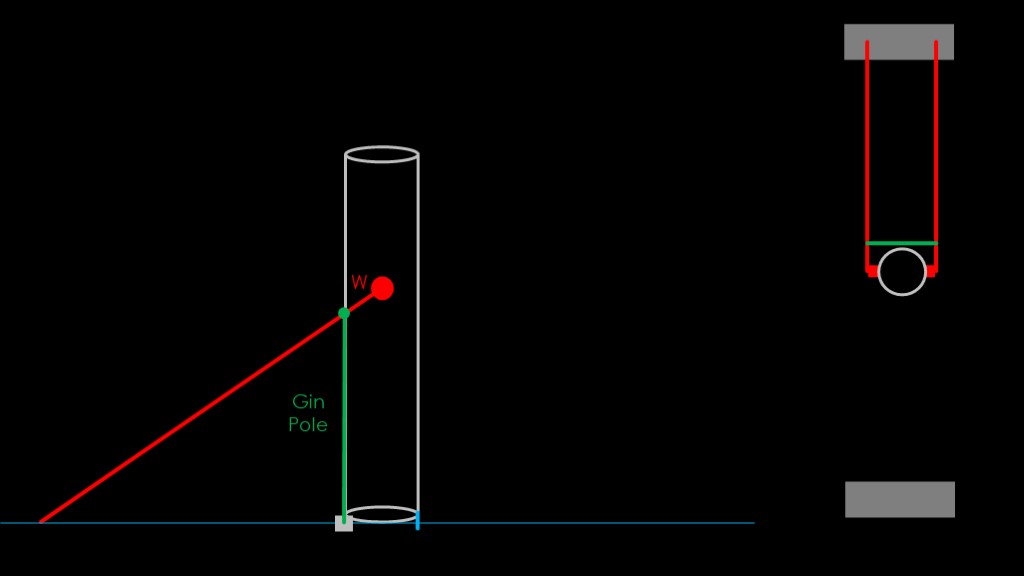
The solution is to add a two support poles - known as "gin poles".
The poles are attached to the ground and to the cables, and serve to hold the cable up in the air.
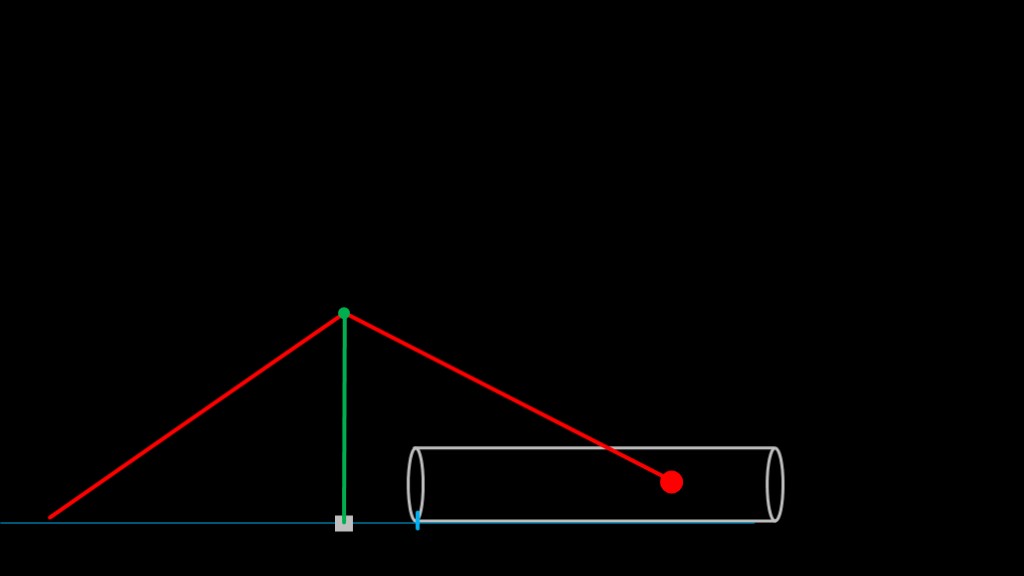
With the pole holding the cables up, the angle stays up and we can easily lower the starship slowly to the ground.
At least theoretically. We'll need to figure out if it's practical
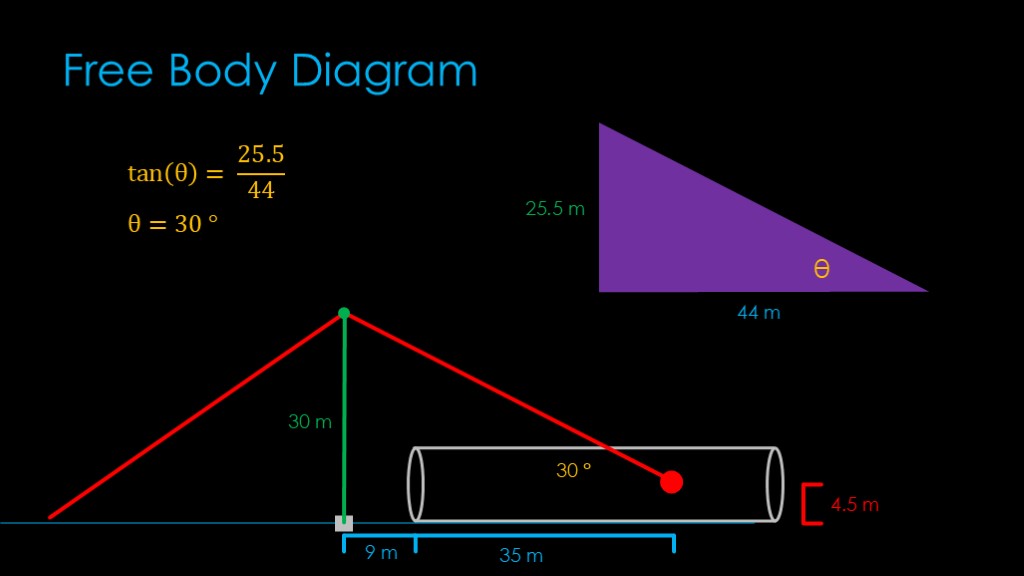
We will create what is known as a "free body diagram" in physis. We're going to look at the forces right before the vehicle touches down.
We'll start by adding some dimensions to our drawing. The gig pole is 30 meters high. The pivot point is 4.5 meters off the ground.
In the horizontal dimension, the pivot point is 35 meters from the base and it's a further 9 meters - the diameter of starship - to the pole.
We can pull out the triangle. It's 25.5 meters high and 44 meters long. We want to know the angle theta.
Going back to our high school trig, we know that the tangent of the angle theta is 25.5 divided by 44. We solve for theta and get 30 degrees.
Pro tip here - if you want to check your trig in an example like this, change the values and see if the changes make sense. If the vertical distance was only 12, the angle would be about 15 degrees. That's about what we would expect. And if the vertical distance was zero, the angle is zero - also what we would expect.
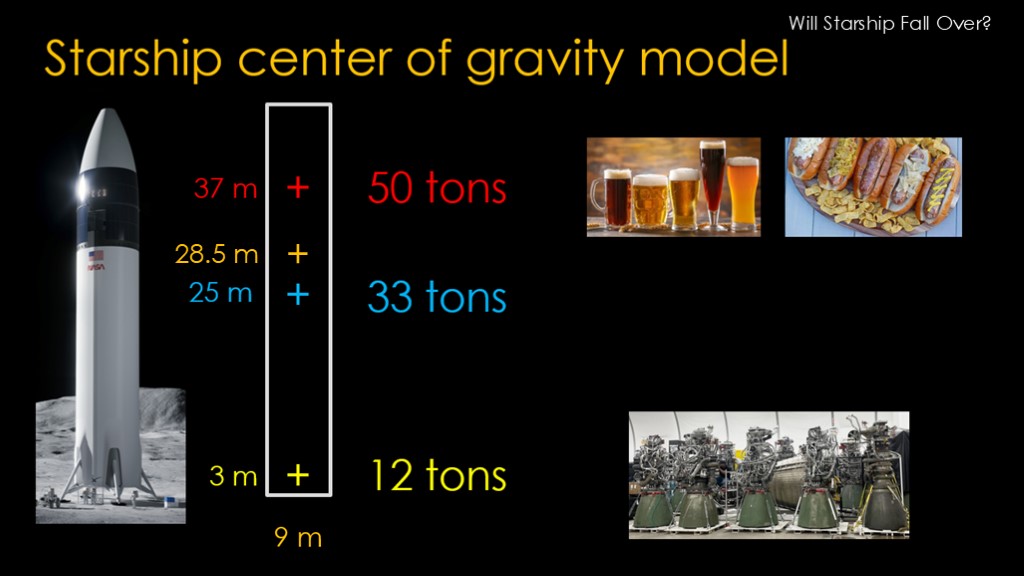
I'm now going to use the starship center of gravity model I developed in the "will starship fall over?" video. In it, I estimated the center of gravity of an unfueled starship with 50 tons of cargo to be at 28.5 meters, and the total mass to be 95 tons.

Right before starship touches down, some of the support of the starship is going to come from the left - or base - end, and some is going to come from the attached cable. We need to figure out how much is supported at each of those spots.
The model says that the center of gravity is 28.5 meters from the base and the mass is 95 tons. It's close to the cable attachment so most of the load is on the cable end.
It turns out that it's 18 tons on the left end and 77 tons at the cable attachment. Doing that calculation is left as an exercise to the viewer.
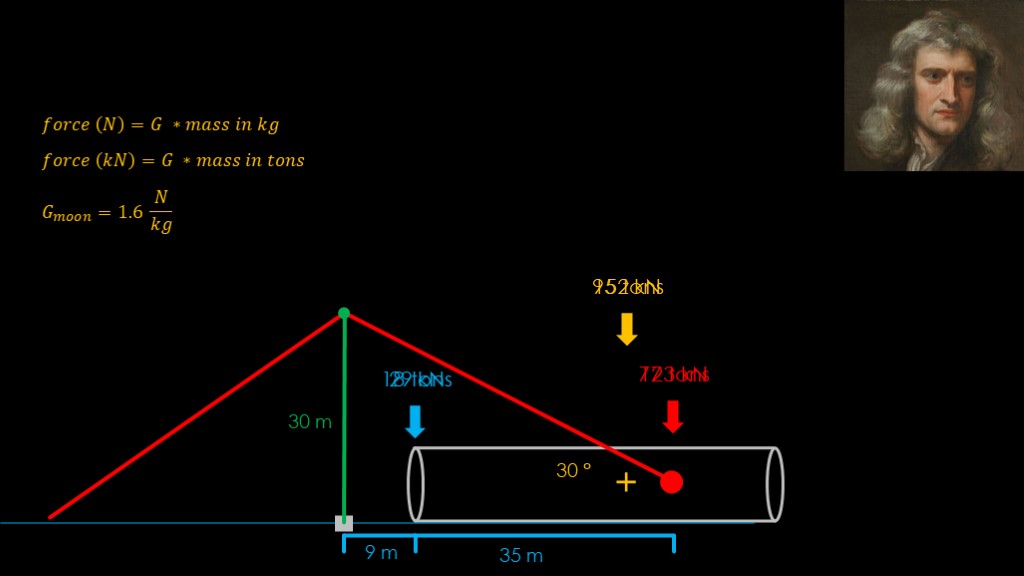
And that works pretty well if starship was on the earth - in standard gravity I could just switch from using tons as a measure of mass to tons-f as a measure of force.
But I've decided to use the proper unit of force, the Newton. The force in newtons due to gravity is simply the gravitational constant G multiplied by the mass in kilograms.
We can multiply by sides by 1000 to find that the force in kilonewtons is equal to G multiplied by the mass in tons.
The gravitational constant for the moon is 1.6 newtons per kilogram, so we can update our diagram with forces...
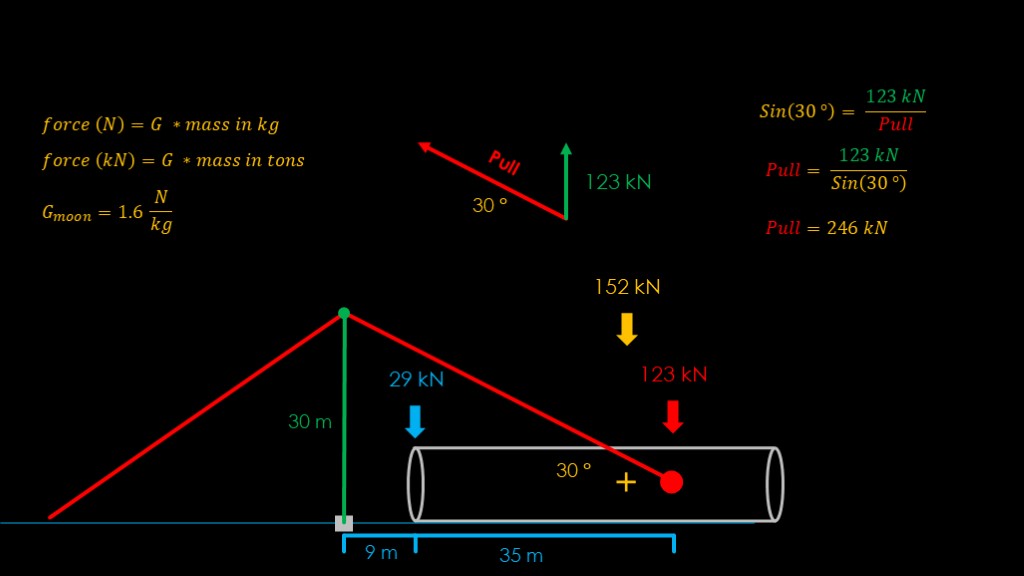
Just a little more math, and we'll have our answer.
To counter the 123 kN force pushing down at the cable attachment point, we need a 123 kN force pulling up.
But the cable doesn't pull straight up, it pulls to the side at 30 degrees, so we need to figure out how much pull at 30 degrees will be required to produce a 123 kN pull up.
Back to the trig. We know that the sine of 30 degrees will be equal to 123 kN divided by the pull. Rearranging the equation to solve for pull, we end up with a pull equal to 246 kN. That is the amount of tension on the cable.
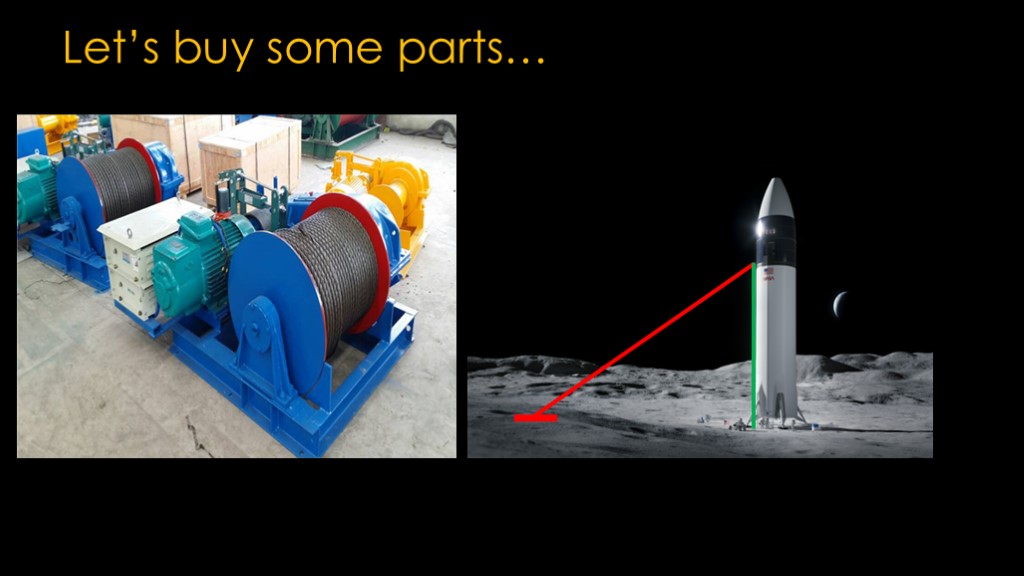
A winch that could pull at 246 kN would be known a 25 ton winch on earth. It's a large and heavy piece of hardware. And we want one for each cable, both able to handle 25 tons so we have a good safety margin. We also need two lighter winches to pull starship enough to the side so it can be lowered by the big winches.
We don't actually need a winch with a big motor to lower starship down; we just need one with a braking system that will slow it down. That would be lighter but still massive.
We also need an anchor in the moon that we can pull against with 246 kN of force. We can easily do that by... yeah, I don't have any idea, but anchoring is a proven technology on earth. I'm sure that everything associated with it is heavy.
And then we need that 30 meter pole that can hold up to the force. We can probably just attach it to the side of starship during launch.
This all assumes only a 50 ton payload to the moon. If you want to carry 100 or 200 tons, the forces get bigger
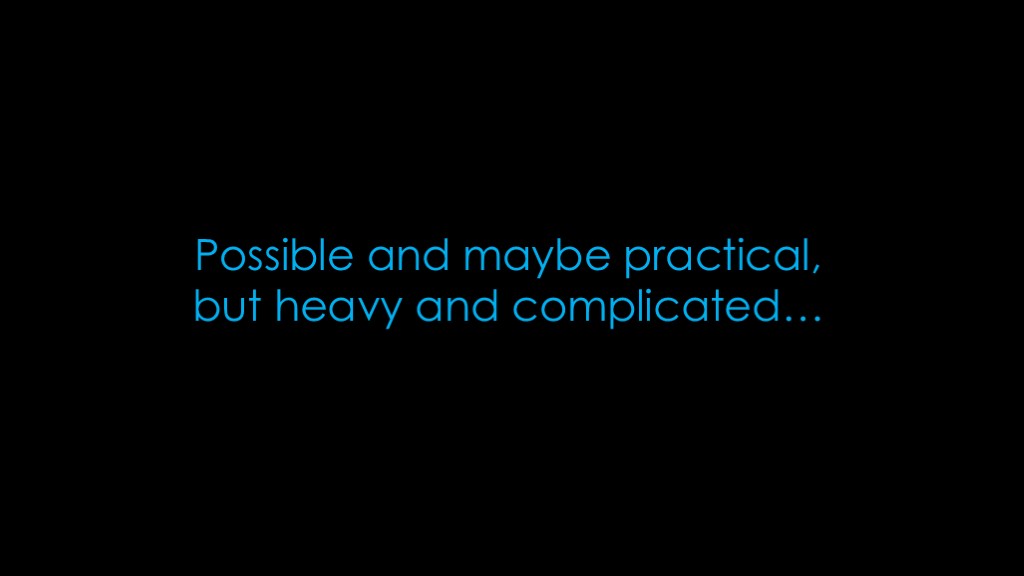
What's the verdict on this approach? It's possible and perhaps practical, but it's heavy and complicated and requires a lot of development work. It also requires heavy equipment on the lunar surface to build anchors and pull cables around.
What we really need is a simpler approach, perhaps one that leverages things that we already have.
Which takes me to a stupid idea that spawned this video...
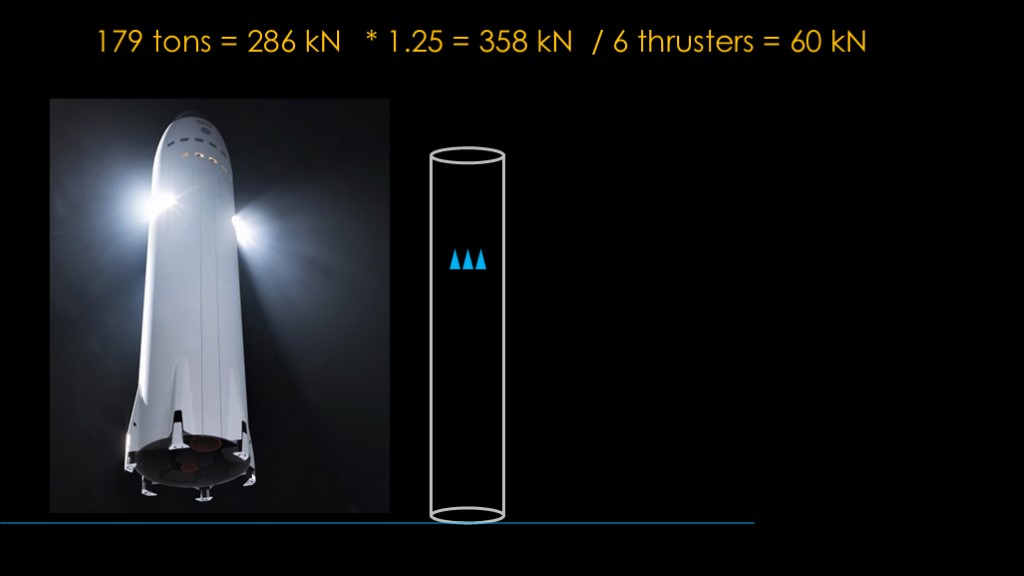
It is possible that lunar starship will have thrusters to use for landing to avoid any issues with using the main engines.
They will need to counter the mass of the crew lunar starship, which is 179 tons. That will require 286 kN of thrust. Adding on 25% to be able to slow down gives us 358 kN, and if there are 6 thrusters they will need to be about 60 kN each.
The arrangement might look like this...
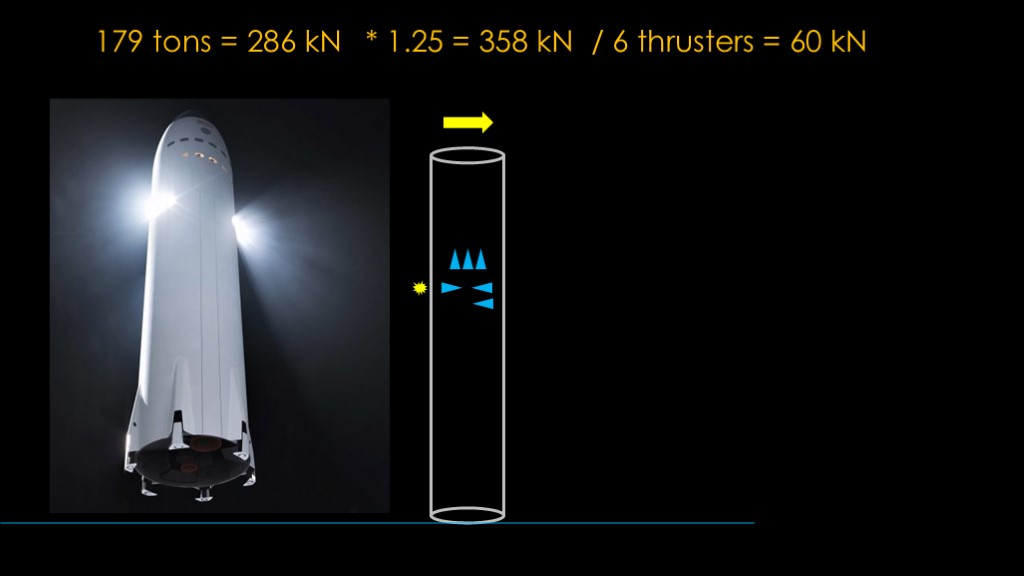
If we are willing to add six more thrusters pointed to the side, we can do the following:
We start by firing the two left-facing thrusters, and that's enough to cause starship to topple over to the right.
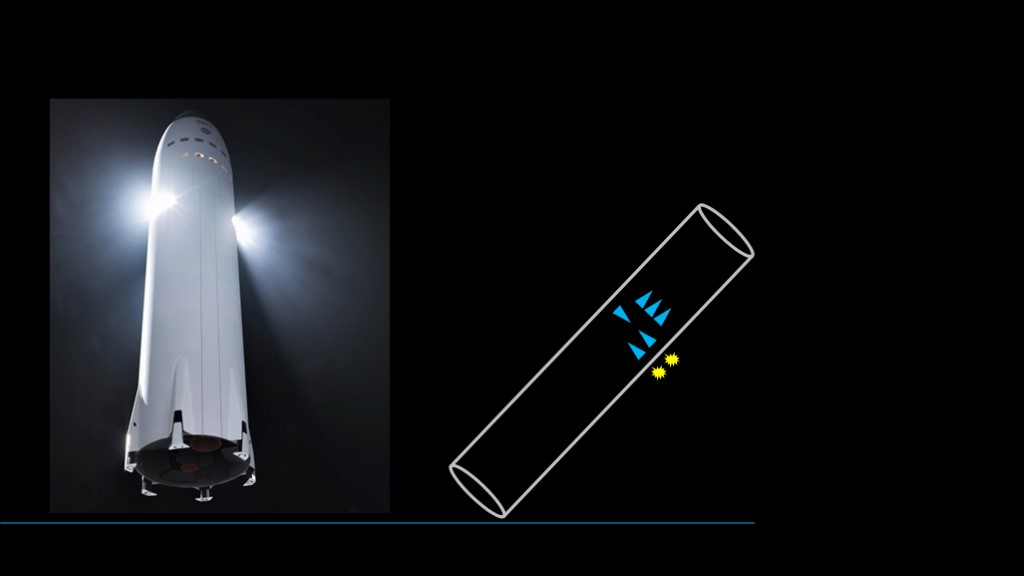
And as it tips over, we fire the right pointing thrusters to control the speed of the descent.

And finally bring it to a gentle landing.
The force of gravity right at landing is 123 kN, and four of the thrusters provides 240 kN. We might be able to do it with two thrusters, one on each side.

What's the evaluation of this approach?
It uses systems already present on the vehicle
It only requires 6 extra thrusters plus the plumbing and other support mechanicals, which will not add a significant amount of weight.
It does not require any lunar surface preparation.
And finally, it will be far more entertaining to watch.

Or perhaps...
This is probably the simplest approach, and if you have thrusters strong enough to handle landing and you don't need to take off, you can just use the thruster to flip around and land horizontally.
The is the backwards version of how starship will land on earth.
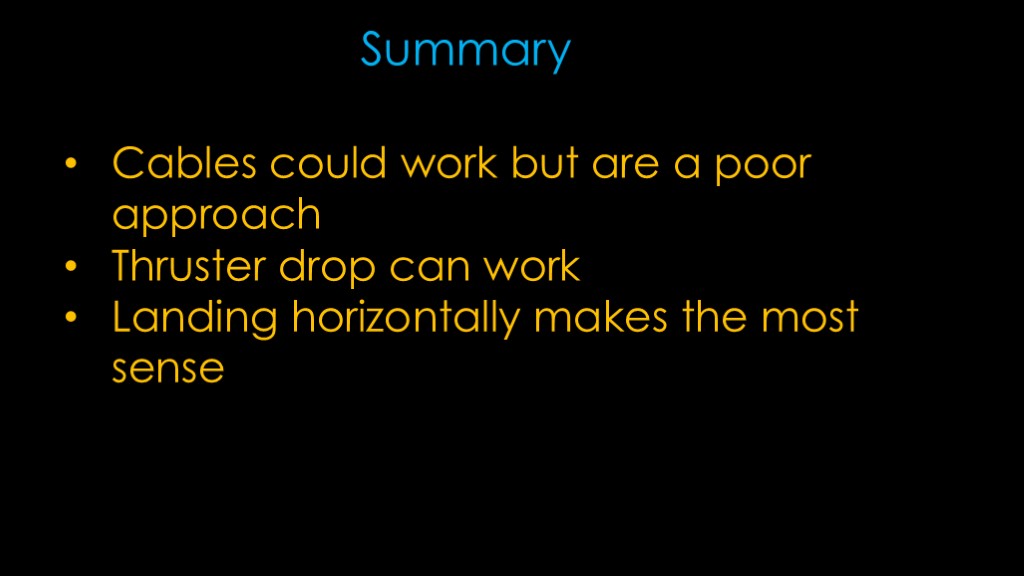
In summary...
Cables could work but are a poor approach
Thruster drop could work
Flipping to land horizontally makes the most sense.
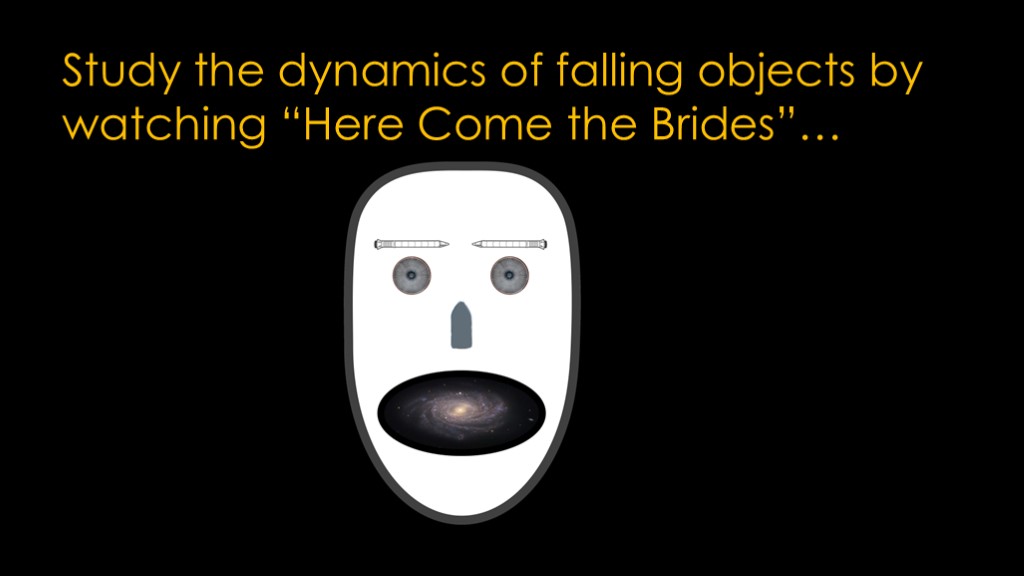
If you enjoyed this video, please study the dynamics of falling objects watching here come the brides...